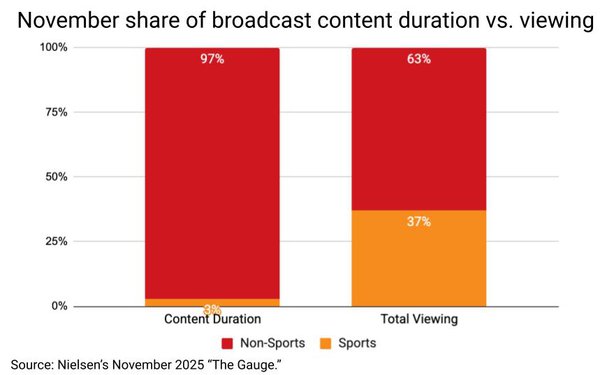NEXT UP: THE AFFINITY ECONOMY
Happy Monday Peaceniks. Are you ready for what’s next?
2026 starts in just two weeks. My new year’s resolution for Media is to force the community, and those who cover it, to finally stop their obsessive navel-gazing and start listening to our audiences.
In 2025, the Media industry wasted so much time, money, and energy looking backward for answers. The perfect case study for this misspent bandwidth is the irrational bidding war for Warner Bros. Discovery (Disco Bros) that’s at the center of everyone’s attention as the year ends.
Rather than transforming for what’s ahead, Paramount, Comcast, and Netflix are rabidly competing to overpay for Zaslav’s dying enterprise - while destroying the value of their own companies in the process. Recently, I broke down how little logic there is behind Netflix’s WBD bid and why Nepo Kid Ellison’s escalation makes even less sense (and cents).
Media’s most powerful men are all desperately grasping for the past; for a Hollywood that no longer exists and never will again. We are watching the “best minds of our generation” battling to be the Kings of irrelevancy.
So, why does Media do this to themselves? Because Trad Media consistently ignores the data of its own demise, staring them right in the face.
Examples: Netflix’s viewership has been flat for at least two years. Paramount’s $7 billion payout for UFC can never break even. Comcast is spinning out the traditional cable networks that generate free cash flow, while simultaneously trying to buy two other, very old school Media giants - ITV and WBD - even as their core business, broadband, flatlines. Yet the easily-distracted analysts who cover the industry never ask its leaders the right (or hard) questions. They’re far too busy covering Media’s silly horse races.
The Moguls no longer run our industry. That is why they are spinning out of control. The audiences are now in complete control of their entertainment. That user-centric gravity has created the radical fragmentation that will define Media - in 2026 and forever more. This makes our business much more complicated and difficult than earlier eras and makes our old business models irrelevant.
Above, I’ve posted a full speech I gave recently for The International Emmys - where I spoke actual truth to the powers that be. I strived to offer focus for what’s happening around us right now and point us toward the horizon for where Media is going. The presentation is packed with data that represents our audiences, not our C-Suites, and shows real-world examples of the transformation the industry must embrace if its going to meet the moment that 2026 will be.
Radical transformation is possible. I promise. The case studies above prove it. However, the key to our successful evolution is to put away the childish bullshit of our past and start listening to our audiences. If we follow them, they will lead us to the future.
If you dig the video and want the slides that go with it, below my sign off, you’ll find a link for a downloadable PDF of all the slides I presented.
Happy Festivus for The Rest of Us!







